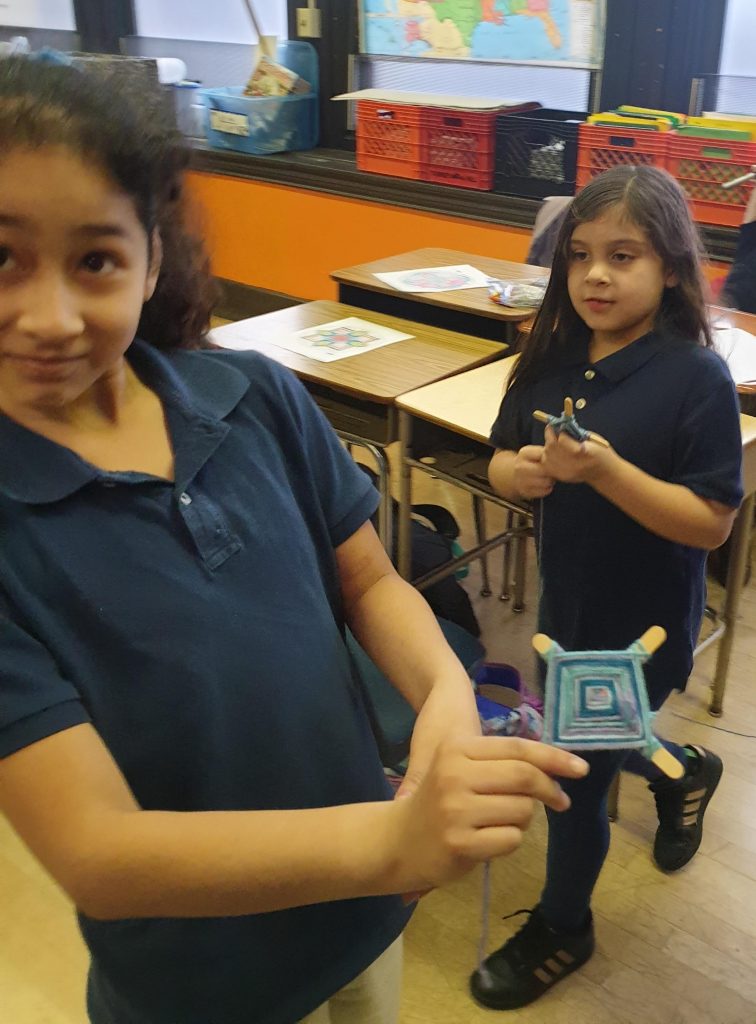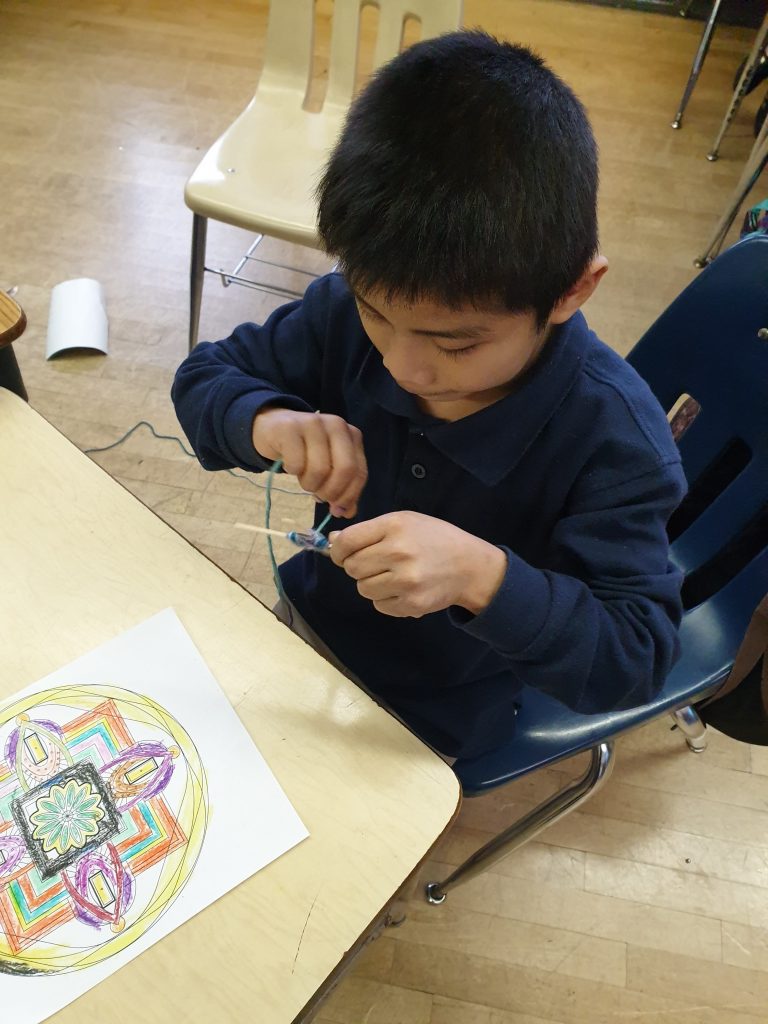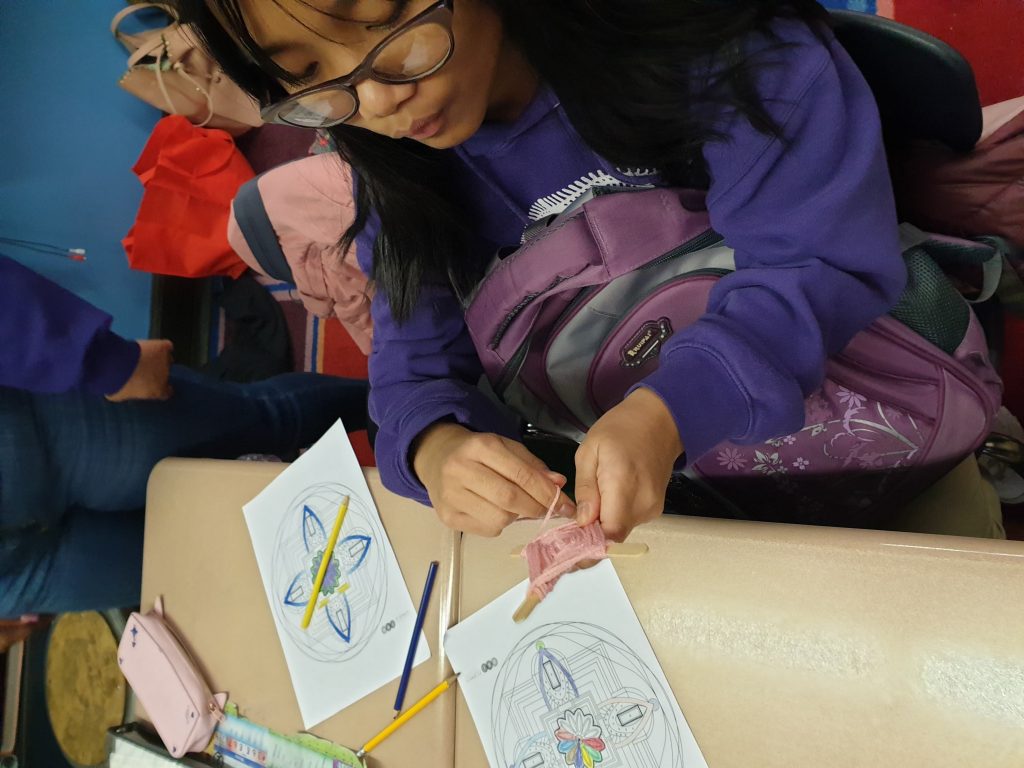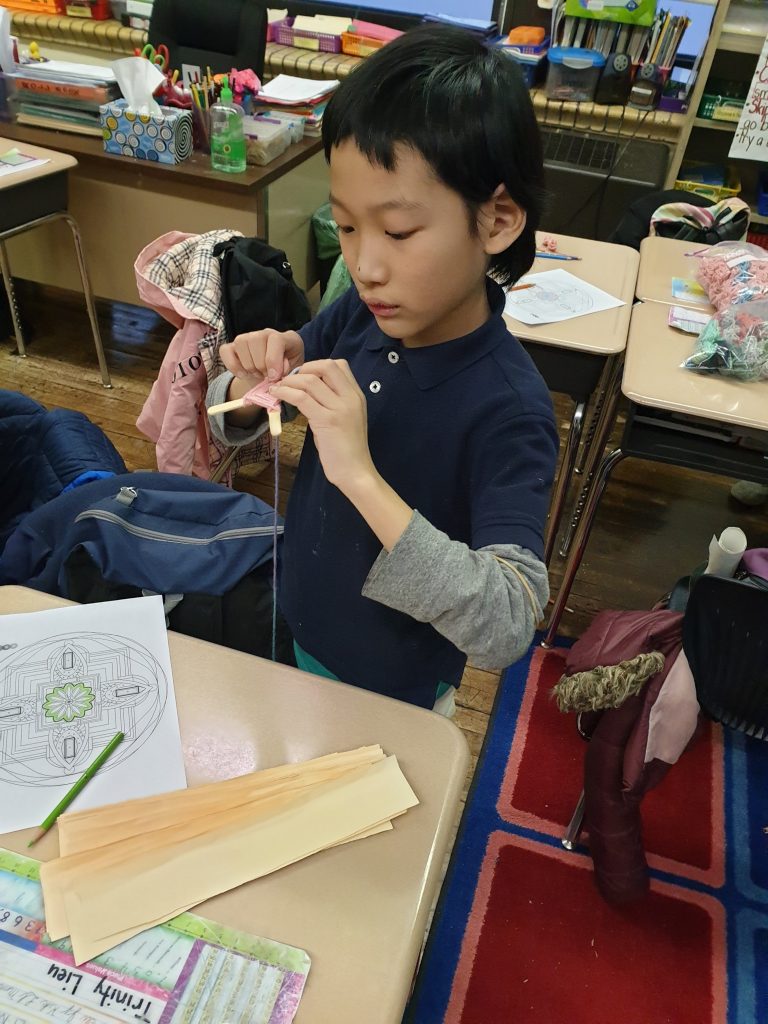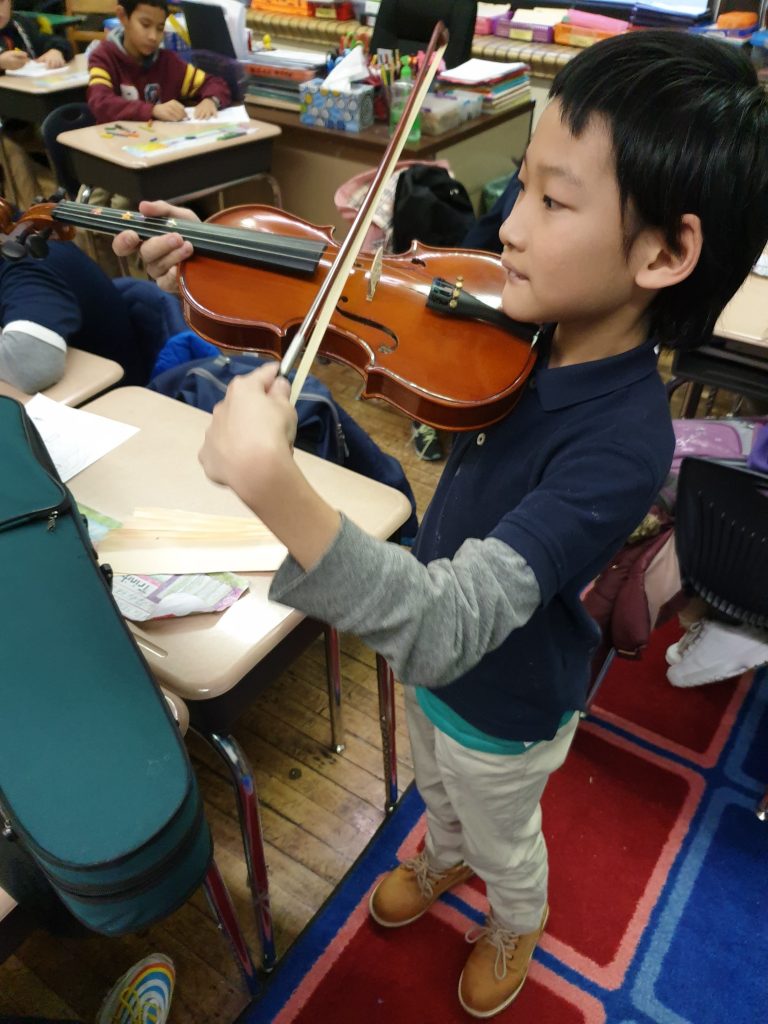Meditating is the act of thinking deeply or focusing one’s mind for a certain amount of time. This can have many benefits, especially in the business of daily life and stress. One of the most popular uses for meditating is to reduce stress, but it also enhances self awareness, lengthens attention spans, and promotes emotional health. These are all ideas we want to combine with the activities we are bringing to the classroom.
In our classes at Southwark, we began with mandala’s. The main use of mandala’s are to allow an individual to meditate internally by focusing on the designs and colors . The goal is to allow the stressful thoughts to disappear for a while and bring all your concentration onto the design in front of you. We know that after a full day of school, our students are thinking about so many things and struggle to focus sometimes. We began our class having the students color a mandala printout for the 1st 15 minutes of class. We had calm, instrumental music playing, and we asked that they take this time to release the stress and worry from school and only focus on coloring the design. This worked so well with the classes. The students were much more attentive after concentrating on one thing for a short amount of time. It also allows them to express their creative side, which often we are not able to do in our daily lives and stresses.
We also went through the meanings of each color when looking at a mandala and had the students think about what colors they wanted to use for their own mandala based on the meaning. I have the different meanings listed below that we went through with the class.
| COLORS | MEANINGS |
| Red | Strength, more energy and passion |
| Pink | Love, femininity and intuition |
| Orange | Creativity, self-awareness, intuition & transformation |
| Yellow | Wisdom, learning, laughter and happiness |
| Green | Physical healing , psychic ability, nature and caring |
| Blue | Emotional healing, inner peace and meditation |
| Purple | All things spiritual, for spiritual focus |
| Black | Deep thinking, mystery and individuality |
After this we brought in the Ojos de Dios craft, translated to God’s Eye. (see the previous lesson plan)
Step 1: We had pre-made popsicle sticks glued like a cross that we handed each student. We also brought equal lengths of individually wrapped pieces of yarn and let each student pick a color to start with
Step 2: This craft can be confusing to explain, so we found that the best way was to show the whole class and then go to each individual group and walk them through it. We used the phrase “wrap and turn” to promote the repetitive pattern that this craft requires, but this also allowed them practice repetition in their heads as well as with their hands.
Step 3: The classes got the hang of this pretty quickly, so they ran out of string. We let them choose another color of yarn and tie it on to the 1st piece. This allowed them to make colorful “ojos” and create different patterns depending on the yarn.
Step 4: While they were wrapping their yarn, we explained the meaning of Ojos de Dios and where it came from. The four ends of the sticks represent the four elements. We asked them to list these if they knew them. We also discussed how the center represents the sun and the capability to understand things even if we can’t see them. This craft came from the Indigenous Peoples in the Americas who used the center to focus on what they didn’t know and look inside themselves to find the answer. This reinforces the idea of concentration and focus like the mandala we started with.
Step 5: We have some really creative students. Once they completed their craft, many of them turned it into something of their own. Some students tied a string through one side and turned it into a really cool necklace. Other’s made hats and kites, all super creative ideas. Most of them wanted to give their craft to someone, and we reminded them that these were used to represent blessing and positivity, so whoever they should relate this message to whoever they gift this to.
Lastly, we also brought in a violin to show the class. While some of our students know how to play this instrument, many have never been able to hold one. We pointed out the tuning pegs, strings, bridge, and chin rest. They were able to hold the violin and their classmates helped point out the correct placement and hand holds. Most of them also knew what the bow was and that it was made out of horse hairs. They had a lot of fun experimenting different notes and figuring out the different tones and sounds they could make with the bow and the strings. By bringing in different instruments, we are able to bring exposure to the class, since many will not gain this experience anywhere else. They are also able to gain confidence by simply holding an instrument and learning the different parts and aspects of music.




